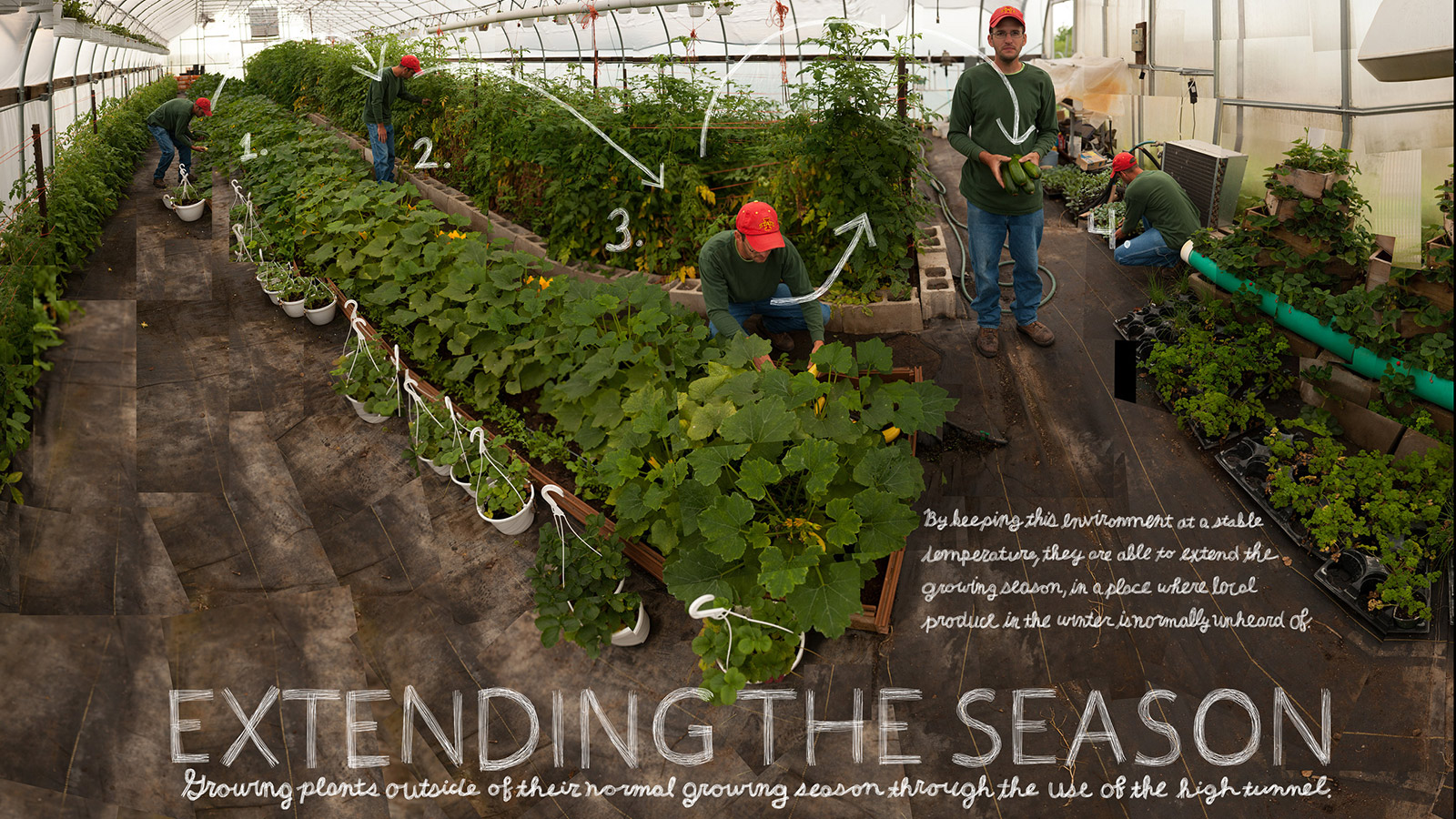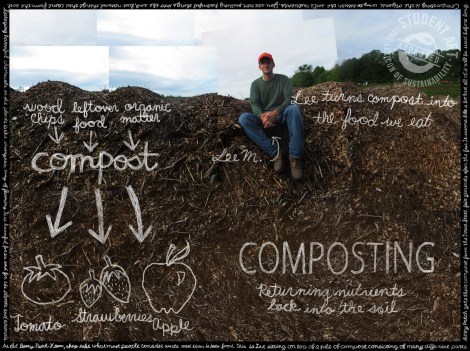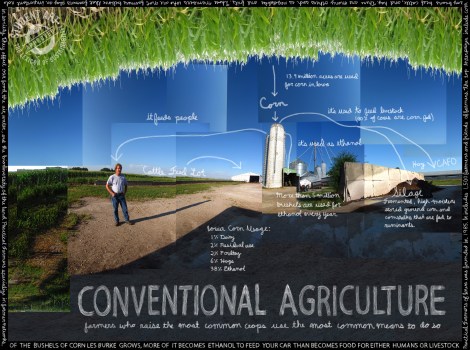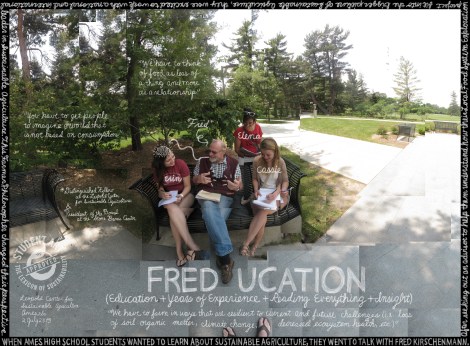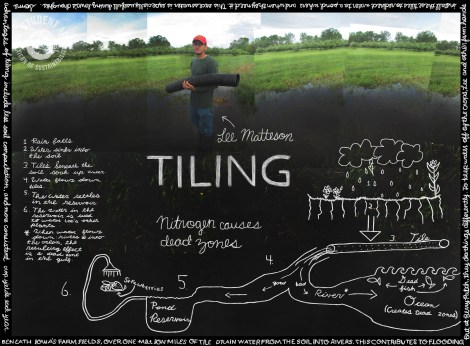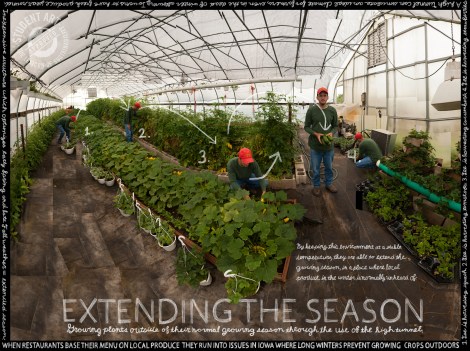
The Lexicon of SustainabilityClick to embiggen. See more photos at the bottom of the story.
You’ll recognize the Lexicon of Sustainability images if you’ve seen them around (perhaps here at Grist). The work of Douglas Gayeton and Laura Howard-Gayeton, they each compress a sustainable-food lesson down to a few phrases scrawled on a mosaic of photos. They’re also showing up in a book, in pop-up shows, and in the form of short movies airing on PBS.
But there’s something different in the latest crop of images in the works: They’re all made by high school students. The result is a set of intensely local artworks that manage to avoid the pitfalls of other awareness-raising projects, and could just make an actual difference.
It all started when the Lexicon team noticed that a high school in Ames, Iowa, had organized an unusual number of shows around the Lexicon project. Typically, they’ll mail prints to a group that agrees to do five shows; this high school had done nearly 20. “Who are these guys?” Gayeton remembers thinking.
Just a group of remarkable students, it turned out, living right in the middle of America’s agricultural contradictions, and led by a high-energy teacher, Mike Todd. When Gayeton spoke to the class by Skype, they told him there was a big problem with his images: Every time they did a show, people would ask, where are the Iowa photos? They were surrounded by some of the most innovative farmers and agricultural problem-solvers in the world, but none of them had made the shows. If the Lexicon team wasn’t going to make images about Iowans, the students wondered if they could do it themselves. And so the Gayetons agreed to come out and teach the class the tricks needed to replicate the style.

Project Localize students Ania Chamberlin, Cassie Kramer and Tessa Musa, with their teacher Mike Todd, share with Iowa Rep. Steve King (left) the story of a veteran, Jeff Hafner, who transformed his family’s CAFO farm into a sustainable aquaponics farm in Iowa.
A core group of students was so galvanized by the project that they worked through the summer, eventually creating these images.
“What they learned was just shocking to them, I think,” Todd said. “What you assume about the food system is not necessarily what’s really going on. They just felt they really needed to do something.” And so they kept on working. The finished product was impressive, good enough to show off. The students then took their art to Washington, D.C., to share with politicians and the USDA.
Now those students are training others in the same skills, and 25 other high-schools are working on their own version of the same project. The interesting thing about this project, which the Lexicon people are calling Project Localize, is that the students aren’t simply repeating conventional wisdom.
Often, raising awareness becomes a circular end unto itself. Awareness is raised, the newly aware ask what they can do, and they are told … raise awareness. This project’s distinction is that the students are actually producing something fresh. They aren’t repeating talking points from some central organization; instead, they’re going out into their own backyards and reporting on what they find there.
Those issues are close enough at hand that people actually can help. As Todd put it, “It’s not the company line or the party line. They’re going out and getting the farmer’s words themselves. And I think they were empowered by that.”
Click to embiggen the images:

